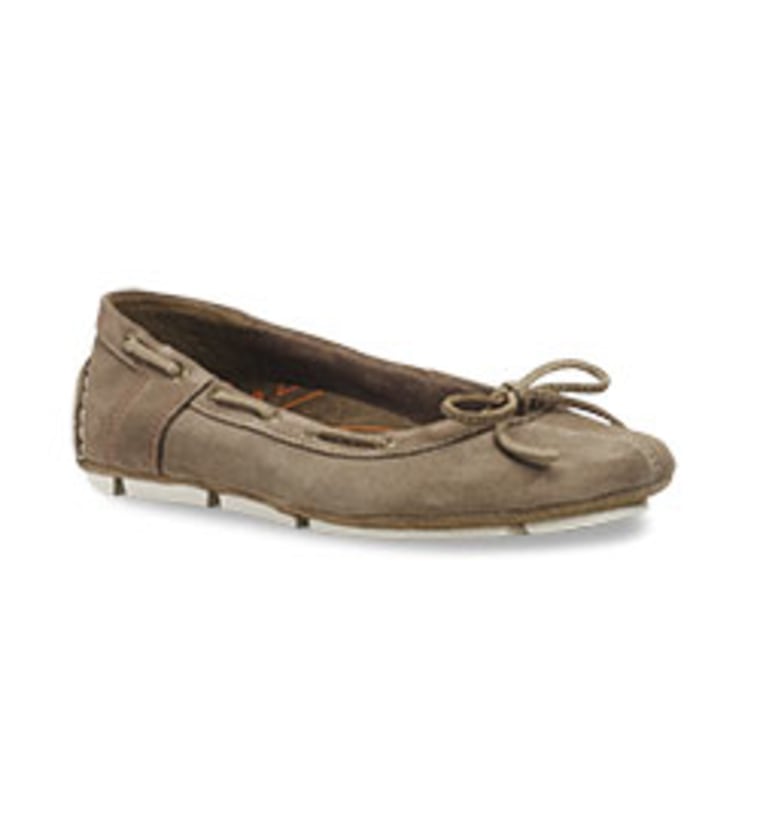Having trouble keeping up with our increasingly organic, eco-friendly world? Let me be your guide! From all-natural makeup to the best in eco-conscious jeans, I will test and review the products and treatments that are best for you and the planet.
Oh, if only there were a spell to make my entire life instantly eco-friendly. With one blink I’d be driving a hybrid car, heating my home with solar panels, wearing only the finest in eco-stylish garments and using nontoxic products to clean my bathroom and my body. I can’t say I’m not trying. GreenDAY readers know I’m trying. When possible, I’ve got bamboo sheets on my bed, organic cotton T-shirts in my closet and 100% natural toothpaste in my medicine cabinet. But I’m not eco-perfect. Not even close. Take my shoes. Though I’ve been aware of environmentally conscious footwear design for quite sometime, I’ve been hesitant to make the leap to shoes that are as beneficial for the planet as they are for my sense of style. Why? It’s all a bit fuzzy, but it seems to have something to do with burlap. Until recently — very recently, like last week — whenever I imagined shoes that were processed with no toxins, shoes that would leave a minimal carbon footprint, I pictured a piece of burlap wrapped around each foot secured with a length of twine. Rustic chic, but not for me.
Today, you can leave the burlap at home because there are more options than ever for fashion-forward footwear (try to say that 10 times fast). Several shoe manufacturers — some big, others still growing — have restructured their processing techniques to use less energy (reducing greenhouse gases in the process) and fewer toxins. Here are some of my favorites:

When you think of Timberland do you think of lumberjacks and rappers? I do. I mean, I did, until I was dazzled by the company’s efforts to become more environmentally aware and fashionably inclusive (I like lumberjacks and rappers, but they don’t usually wear the same shoes as a 30-something pregnant lady). While you can visit Timberland to stock up on all of the big, clunky boots that you would ever need, the company also makes shoes that can take you seamlessly from the office to the after-work drink, to dinner later that night. I’ve got my eye on the Baldaci Ballerina Taupe Suede Flat,which includes a moisture-wicking lining made from 70% recycled yarn content. But cute shoes aside, Timberland is on a serious mission to consider the planet. In 2006 the company introduced a “nutrition label,” which informed consumers of the energy used in making each pair of shoes — including everything from processing the raw materials that make up the shoes to the transportation used to ship them to retail locations. And earlier this year, Timberland took eco-awareness to the next level with green index tags, easy-to-digest labels that measure the environmental impact of each pair of shoes. A scale of 0 to 10 denotes the shoes that were made with the least negative effect on the environment (0) and the most (10). Timberland’s clear attempts to not only protect the planet, but to also include the consumer in the process is commendable — and it doesn’t hurt that the Baldaci Ballerina would look amazing with either pants or a skirt.
“It’s not easy being green.” Just because Kermit said it, doesn’t mean it’s true. Companies like Timberland and Simple shoes help us live greener lives by not only creating irresistible products that are made without harming the planet, but by also by giving us an eco-education in the process. While Timberland’s green index cards walk the average shopper through the environmental impact of each pair of shoes, Simple Shoe’s Green Toe program takes consumers through a guided tour of the eco-friendly materials used in all of their products. The colorful, user-friendly site is enticing for kids and adults — click on the PET symbol and discover polyethyleneterephthalate, a material made from used plastic bottles that Simple uses as pedbeds, or jute, an Asian shrub that’s 100% biodegradable and can be formed into the upper part of a shoe or the laces. Simple’s look is comfort-casual, focusing on sneakers and sandals for men and women. Check out GreenPiggies for environmentally savvy kids’ shoes.
Billing themselves as cruelty-free as well as eco-friendly, MooShoes owners and sisters Erica and Sara Kubersky have been selling their unique line of “vegan” shoes since 2001. No leather is used in the creation of MooShoes, which is pleasing to the vegetarian set and comforting to the environmental set (animal skins are commonly processed with environmentally unfriendly chemicals). MooShoes can be your shoe for all seasons and all occasions with dress, casual, sneakers, boots and sandals for men and women — this winter, I’ve got my eye on the Alta Green boot. But if there’s no leather to be found, what, exactly, makes these vegan, eco-aware wondershoes look so snappy? It’s pretty simple: a synthetic microfiber that’s designed to look like leather. Who knew?
For more shoes that are eco-cool, check out Patagonia (environmental clothing pioneers), U.K.-based TerraPlana and the Organico line by El Naturalista.
Marisa Belger is a writer and editor with more than 10 years of experience covering health and wellness. She was a founding editor of Lime.com, a multiplatform media company specializing in health, wellness and sustainable living. Marisa also collaborated with Josh Dorfman on “The Lazy Environmentalist” (Stewart, Tabori, and Chang), a comprehensive guide to easy, stylish green living.